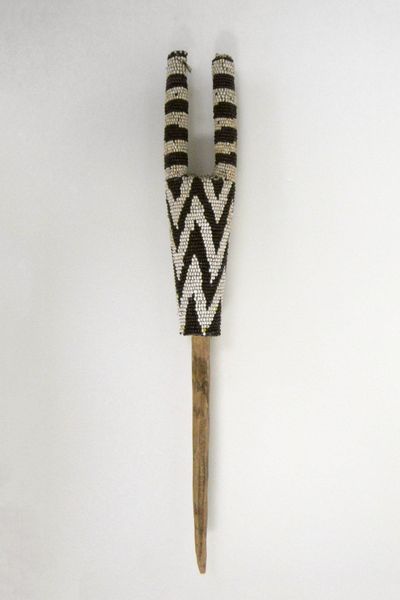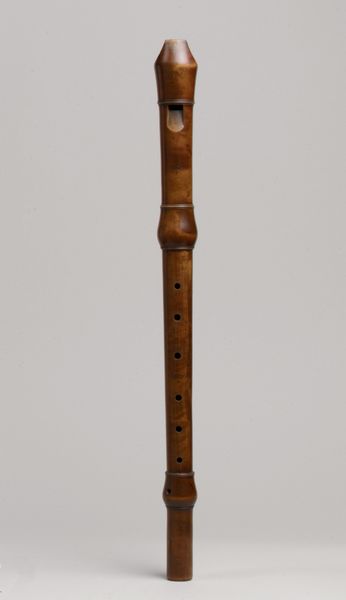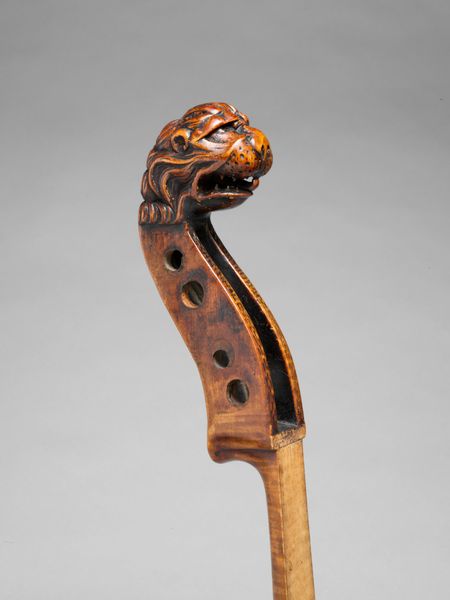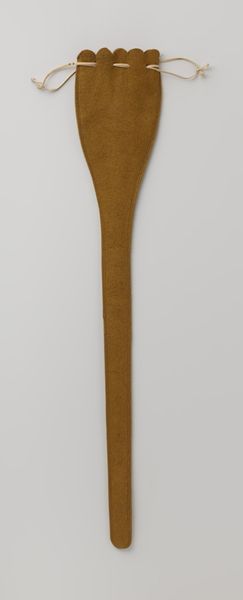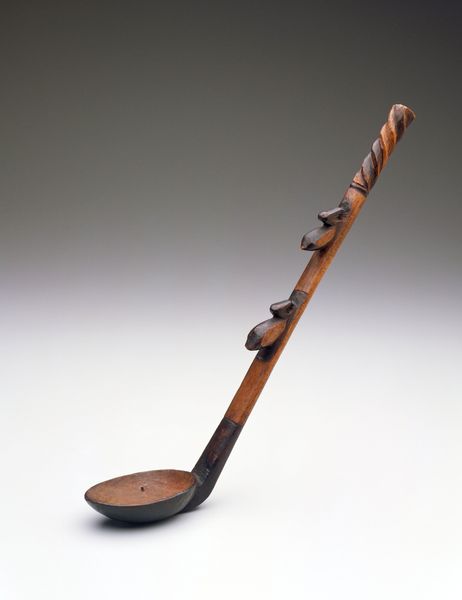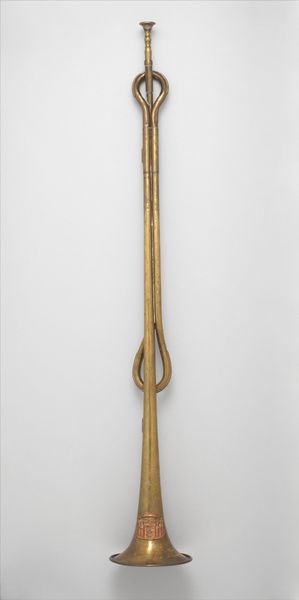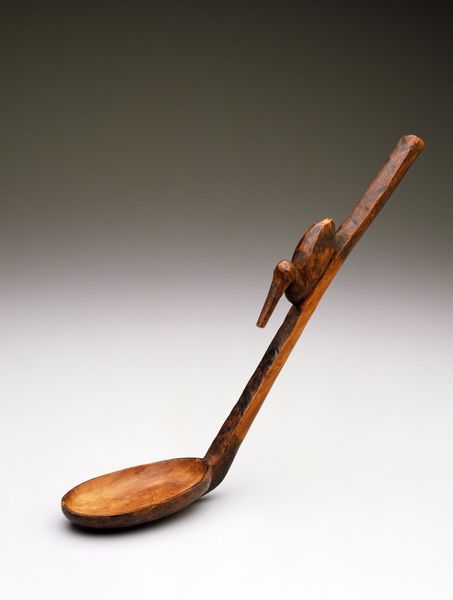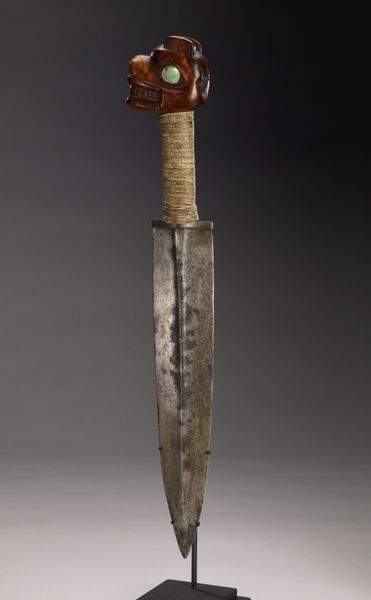
carving, wood
#
carving
#
wood
Dimensions: 22 3/16 x 31 x 1 1/4 in. (56.36 x 78.74 x 3.18 cm)
Copyright: Public Domain
Editor: Here we have an intriguing object, a Ceremonial Axe of unknown date from the Indigenous Americas. It appears to be constructed from wood, textiles, carving and weaving. I’m fascinated by the intricate weaving – what does it tell us? Curator: Notice how the materials themselves—the specific type of wood, the fibers used for weaving—suggest a connection to particular environments and resources, implying specific trade routes. Consider also the labour involved. Weaving, carving, these aren't instantaneous processes. Editor: So, it's less about aesthetic choices and more about… resources and labour? Curator: It is not divorced from the choices available to the crafter, and therefore the agency the crafter held. Was the acquisition of this type of wood accessible to all members of a given society, or did its collection denote something? The decoration on the handle too suggests a complex craft system. How are these decorative choices linked to hierarchy or communal labor practices? Editor: I hadn’t considered the handle beyond its aesthetic value. So, each knot in the weaving, each carved line in the wood, potentially speaks to a wider network of social relations. Curator: Precisely. Consider what materials are accessible. A great deal can be understood by thinking critically about trade, materials, access and application. Even a ceremonial object points towards the labor involved in its production and the social relationships enmeshed within the economic background. It makes you consider how “ceremonial” is an activity too! Editor: It does offer a whole new perspective. I can see the connections between craft, community, and even power now. Thanks for your insights! Curator: My pleasure. Thinking materially challenges the traditional art historical focus on style and authorship.
Comments
No comments
Be the first to comment and join the conversation on the ultimate creative platform.
